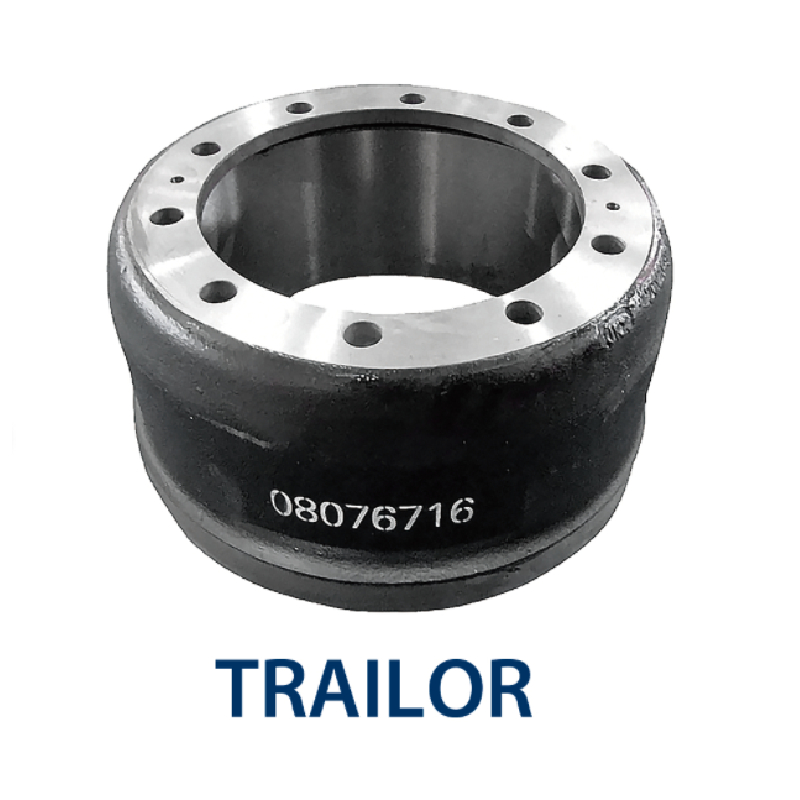8 月 . 02, 2024 14:40 Back to list
Can You Turn Brake Drums to Extend Their Lifespan and Improve Vehicle Performance?
Can Brake Drums Be Turned?
Brake drums are critical components of a vehicle's braking system, typically found in older vehicles or those using drum brakes. Like any other mechanical part, they undergo wear and tear over time, leading to concerns about their performance and safety. One question that often arises is whether brake drums can be turned or machined to restore their functionality.
Understanding Brake Drums
Brake drums are cylindrical components that house the brake shoes. When the brake pedal is pressed, the brake shoes expand outward against the inner surface of the brake drum, creating friction that slows down or stops the vehicle. Over time, the contact between the brake shoes and the drum can cause grooves, scoring, or warping, impacting braking efficiency.
The Turning Process
Turning a brake drum is a machining process that involves removing a thin layer of material from its surface to create a smooth and even finish. This is similar to turning a brake rotor, which is a more common practice in vehicle maintenance. The turning process can be performed using a specialized lathe, which ensures precision and uniformity in the resurfacing.
The key benefits of turning brake drums include restoring their surface smoothness, maintaining proper shoe-to-drum contact, and extending the life of both the drums and brake shoes. It can be a cost-effective solution, especially for drivers looking to maintain their older vehicles or for those on a tight budget.
Limits of Turning
However, there are limitations to how much drum can be turned. Each brake drum has a specified minimum thickness that should not be exceeded after machining. If the drum is turned too much, it can become structurally compromised and may not provide adequate braking performance. The manufacturer's specifications should always be consulted before proceeding with turning.
can brake drums be turned

Additionally, if the brake drum is excessively warped, cracked, or worn unevenly, it may not be a good candidate for turning. In such cases, replacement of the brake drums is often the most sensible and safest option.
Signs That Your Brake Drums Need Attention
Before considering turning your brake drums, it’s important to recognize the signs that they may need maintenance. Common symptoms include
1. Vibration or Pulsation When braking, if you feel a vibration or pulsation through the brake pedal, this could indicate that the brake drum is warped or uneven. 2. Squeaking or Grinding Noises These sounds can indicate that the brake shoes are making contact with a rough or uneven surface on the drum.
3. Warning Light In some modern vehicles, dashboard warning lights may indicate that brake components need servicing.
Conclusion
In summary, yes, brake drums can be turned, provided they meet certain criteria for thickness and overall condition. This process can be a practical solution for restoring braking performance in certain situations. However, vehicle safety must always be the priority. Regular inspections and maintenance should be conducted to monitor brake drum condition and determine whether turning or replacement is necessary.
Always consult a qualified mechanic for an inclusive evaluation. They can help ensure that you make the right choice for your vehicle, balancing cost-effectiveness with safety and performance. Proper attention to brake components can lead to reliable vehicle performance and peace of mind on the road.
-
Brake Drum for Kamaz Trucks Durable OEM Replacement & High Performance
NewsMay.30,2025
-
Brake Drum Man High-Quality Drum Brake & Shoe Solutions
NewsMay.30,2025
-
High-Performance Brake Drum for Kamaz Trucks Durable Drum Brake Components
NewsMay.29,2025
-
Brake Drum Man High-Quality Drum Brake Drums & Brake Shoes
NewsMay.29,2025
-
Brake Drum MAZ High-Performance & Durable Replacement Parts
NewsMay.29,2025
-
heavy truck brake drums
NewsMar.07,2025
